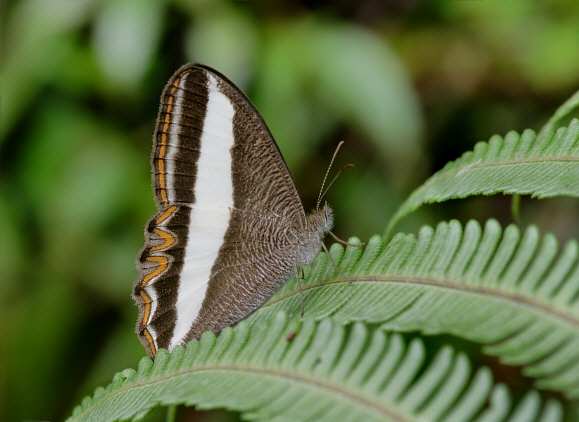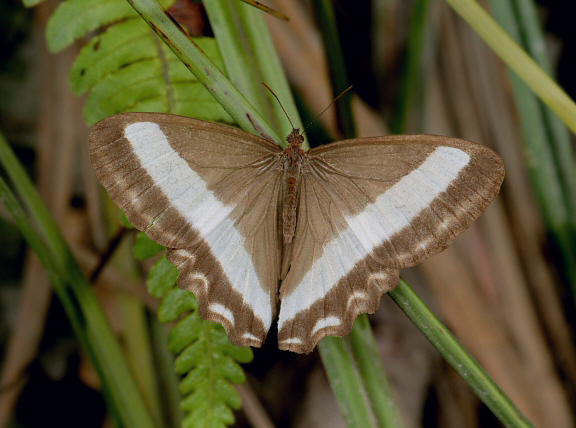
Introduction
The genus Oressinoma is classified, perhaps wrongly ( as the venation has unique characteristics ) under the same subtribe as the Euptychiine ringlets and Taygetis deadleafs. As well as differences in venation, the wing shape and lack of ocelli point to the need for taxonomic revision.
The two species are typhla, found from Costa Rica to Bolivia, and sorata, found only in southern Peru and Bolivia. The latter differs in having the white zone on the wings narrower, more clearly delineated, and more rectangular in profile.
Habitats
Oressinoma sorata is localized in distribution, occurring near streams, or in association with swampy areas where the larval foodplants grow. It is generally found at higher elevation, circa 2000-2800 meters, and is restricted to southern Peru and Bolivia.

Lifecycle
The eggs are pale shining green, spherical, and laid singly on the foodplant. The fully grown larvae are green, with a rough texture, with dark green longitudinal lines along the back and sides. They feed nocturnally on Cyperus (Cyperaceae).
Adult behaviour
The butterflies are usually encountered singly, or in two’s and three’s. They are active only in cloudy weather or weak hazy sunlight. Males perch on sedges or ferns, often for long periods, but remain alert at all times. If disturbed they dart up rapidly, but then lazily descend to resettle on foliage a short distance away. Both sexes feed at rotting fruit, decomposing fungi and dung.
Courtship takes place in late morning. The perching male flies up to intercept a passing female, hovering above her ( probably while disseminating pheromones ) until she settles. At this point the pair face each-other, and the male leans forward to press his antennae against hers, while vibrating his wings. If receptive, the female allows him to maneuver alongside her to copulate.
